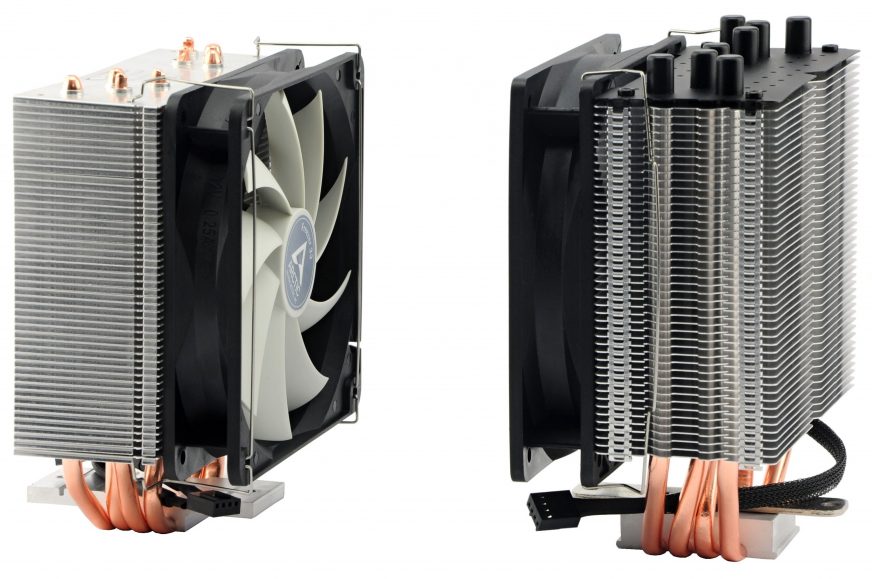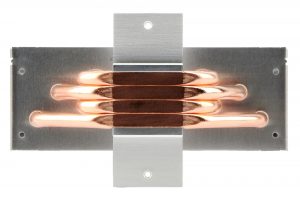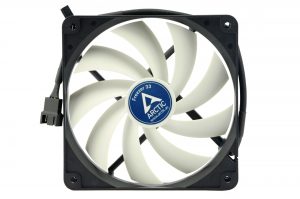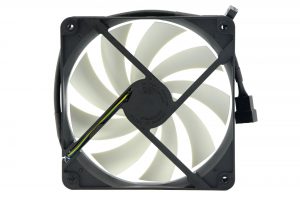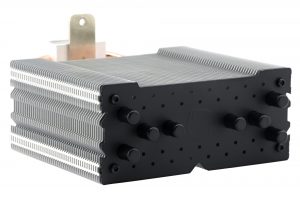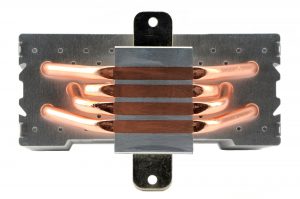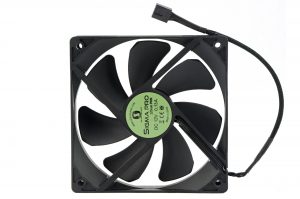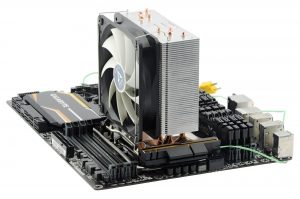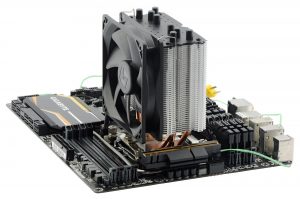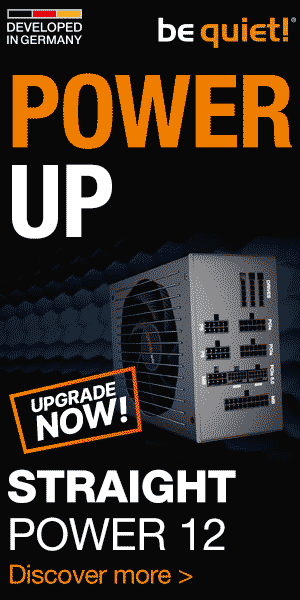Parameters and details
With the i/A32 cooler series, Arctic made a really good impression and created a decent opponent for the excellent Fera 3. In the meantime, Swiss have strengthened their ranks and advanced to battle with Freezer 33. However, the expected drama with fight for every detail did not happen. Because of a design mistake of one of the players, the winner is quite dominant under standard circumstances.
Basic parameters
| Parameters | Arctic Freezer 33 | SilentiumPC Fera 3 v2 | |
| Compatible sockets | AMD AM4, Intel LGA 115x, 2066, 2011(v3) | AMD AM4, AM3(+), AM2(+), FM1, FM2(+), Intel LGA 115x, 2066, 2011(v3), 1366, 775 | |
| Measurements (H/L/W), fan included | 150 × 72 × 124 mm | 155 × 79 × 128 mm | |
| Weight of the heatsink, fan included | 540/651 g | 500/612 g | |
| Number and thickness of heatpipes | 4× 6 mm | 4× 6 mm | |
| Thickness (and gaps) of ribs | Ventilátor | 0.5 (1.65) mm | 0.42 (1.96) mm |
| From the middle of the base to the edge of the fan (and heatsink)* | 47 (62) mm | 48 (61) mm | |
| Possibly conflicting RAM slots and collision height** | 0 | 0 | |
| Fan | 1× 120 mm | 1× 120 mm | |
| Starting RPM (and voltage) | Minimálne štartovacie | 469 (3.71 V) | 316 (3.54 V) |
| Max. RPM | Maximálne (12 V) | 1350 | 1679 |
| Bearings | Fluid | Hydraulic | |
| Approximate price | 26 eur | 26 eur |
*These measures indicate distances between the cooler and RAM slots, or more precisely the nearest PCIe × 16 slot.
**The data reflect the situation on Mini-ITX boards which typically have 50 mm from the center of the socket to the first slot. With the ATX format, it can be up to 7 mm more and that means one extra slot and a wider compatibility than is mentioned in the table. We measured the height limit with fans that are aligned with the maximum specified coolers height.
Details
The construction of the Freezer 33 heatsink is based on the well-established predecessors design and it is not that distinct from the i32 on the outside. This means that the ribs have a conservative shape without any curvature, perforations, surface adjustments, or other elements that benefit the marketing more than the cooler itself. The three cuts at the top rib are an aesthetic matter and even the manufacturer does not find them very functionally relevant.
It is clear that the emphasis was placed on the most effective use of materials. The heatpipes are no longer behind each other (nor next to each other), but they pass the ribs more evenly. Thanks to that, they have a much wider outreach than those of the Freezer i30. Although i30 had more weight, the potential was hampered by the ineffective design of pipes that were too close to each other and a big part of the heatsink was not used optimally.
Heat transfer at the base is also almost perfect. Well, as long as we consider the type with pipes that have a direct contact. The trimmed pipes are tightly next to each other and the air gap between them is not even a tenth of a millimeter (perhaps only CM 212 Evo is more precise in this).
The fan is not terrible too. The character of its sound is more or less aerodynamic. Subtle spinning can be heard only with the rotor right next to your ear. It completely disappears at 10 cm distance. Compared to conventional rotors, it has two extra blades. At comparable RPM, it pushes more air, but that makes it also considerably louder.
SilentiumPC has a slightly different idea of how the cooler that aspires to become the bestseller should look like. Fera 3 v2 has two changes compared to the first version. One cosmetic – for a better look, the caps were fitted at the ends of the heatpipes, and the other more practical, which is supposed to advance the cooler one step further.
The height of the heatsink was increased by 4 mm, but the weight has not changed. The number of ribs is the same as well as the perforation of their surface. And apparently, the spacing between the ribs is wider, which may be helpful and increase efficiency with a very low flow.
The base is conceived a bit differently than the Freezers. It is still the DHT type, but the goal was to create a larger contact area. Obviously, large enough to be in contact with the sides of the IHS of Intel HEDT processors. As a result, 2,2 mm of aluminum filling was formed between the pipes, which does not transfer any heat to the heatsink. Therefore, there is a more intense heating in these areas. Especially in the case when the ineffective filling is also in the middle where are the highest heat exchange demands. Who knows how would Fera fare with Freezer 33 base.
The snarling of the fan is a bit more noticeable this time, but not unbearable. In very quiet computers, however, it can be quite annoying and if you consider yourself a demanding user, you will probably replace it.
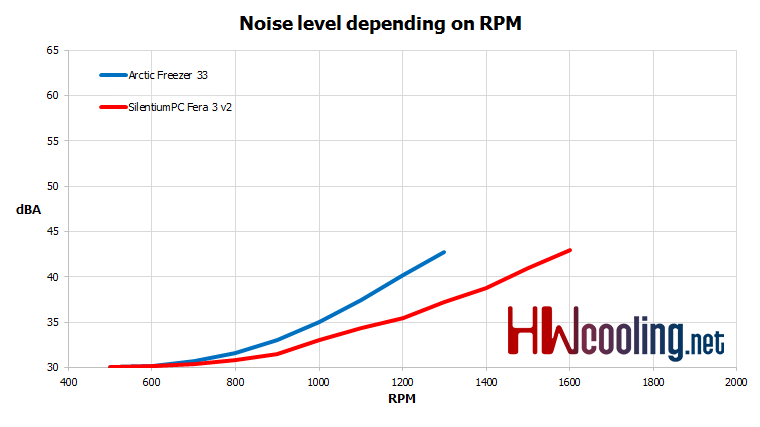
- Contents
- Parameters and details
- Test procedures
- Automatic regulation
- Max. RPM
- 45 and 42 dBA
- 39 and 36 dBA
- 33 and 31 dBA
- Conclusion





